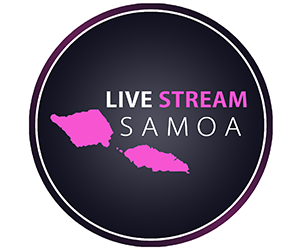Development
Government Launches First 5 Year National Development Pathway

By Lagi Keresoma
APIA, SAMOA 27 FEBRUARY 2022: The FAST Government has launched its first 5 year Strategic Development Plan called “Pathway for the Development of Samoa” based on the vision, “Fostering Social Harmony, Safety & Freedom for All.”
The Plan is based on the key policies of the FAST Party’s election manifesto with a central focus on human and social development based on the theme: Empower Communities, Build Resilience and Inspire Growth.”
Delivering the key note address, Prime Minister Fiame Naomi Mataafa said the realisation of this commitment will pave the way to achieve Government’s longer term vision of “fostering social harmony, safety and freedom for all.”
The 5 year DPS 2021/2022 – 2025/2026 aims to inspire communities and instill growth among all people. But people cannot achieve this alone as it requires community engagement.
“Meaningful collaboration and local ownership are crucial to social harmony and shared prosperity within our communities,” said Fiame.
“It requires strong partnerships amongst all stakeholders and our development partners. Together, we can forge a pathway towards sustainable growth and resilience,” she said.
“In these unprecedented times, Samoa has bear witness to the global pandemic that has affected everyone, and the Government is more committed than ever to encourage community so that they can cope with the uncertainties of today’s world and make the most of opportunities as they arise,” said Fiame.
Key strategy outcome for PDS:
- Improved Social Development,
- Diversified and Sustainable Economy,
- Security & Trusted Governance,
- Secure Environment & Climate Change and,
- Structured Public Works & Infrastructure.
The Plan was put together by the Ministry of Finance following public consultations. The Minister of Finance, Mulipola Anarosa Molio’o led the ribbon cutting ceremony with the Prime Minister and Cabinet Ministers participating in a sign of solidarity to pursue the goals of the Plan.
Mulipola told Talamua that the Strategic Plan is long overdue given the five months of the political crisis that delayed the new Government from taking office until August 2021.
She also clarified that Plan is heavily influenced by the Party’s manifesto that was launched weeks before the general elections.
“We have incorporated in the DPS priority areas highlighted in the Party’s manifesto with priority given to human and social development,” Mulipola explained.
$1 Million Talā Village Development Project
In the core of the FAST Governments development plans is the allocation of $1million talā for all of the 51 constituencies for village based development projects.
The current budget allocates $200,000 for each constituency for the ground work to establish Development Committees, offices and employees as the legal framework is being established to ensure the governance and accounting of project funds and monitoring the projects progress.
According to Mulipola, about 20 constituencies have been registered and work is underway for some districts to secure and finalise their 15 member committees.
Some districts have moved on to advertise the top three posts to manage the village based projects through the Development Committees being established and registered through the Ministry of Commerce, Industry and Labour.
She said these appointments have to go through the same process of advertising, interviews and selection by panels that include a Public Service Commission (PSC) representative, a district committee representative and an independent panellist.
The projects overall objective is to elevate the overall development of the country through the allocation of $51 million talā a year for village based development projects identified by the village themselves.
It decentralizes the control and management of village based projects for greater village involvement, employment and ownership of their own development projects.























